
Birding on Barton Creek
With Biologist Bill Reiner
"Barton Creek is essential for many birds and other wildlife of Austin because it provides a refuge from the hazards of the urban environment (such as cats, cars, and pesticides). It also serves as a corridor that allows them to pass through in comparative safety, and offers familiar surroundings where they can find food and shelter. Each season along the creek brings different birds to see. I monitor rare and endangered species and their habitat on the Balcones Canyonlands Preserve, including the Barton Creek Greenbelt and Wilderness."
Scroll through to discover other birds that can be found along the Barton Creek Greenbelt. Some include the bird's song.

The Blue-gray Gnatcatcher is of our smallest birds at 0.2 ounce (the weight of a quarter), it compensates with an outsized personality, like a miniature mockingbird. A pair will build a delicate cup nest, intricately camouflaged with lichens to look like part of a tree branch. Season: Spring.
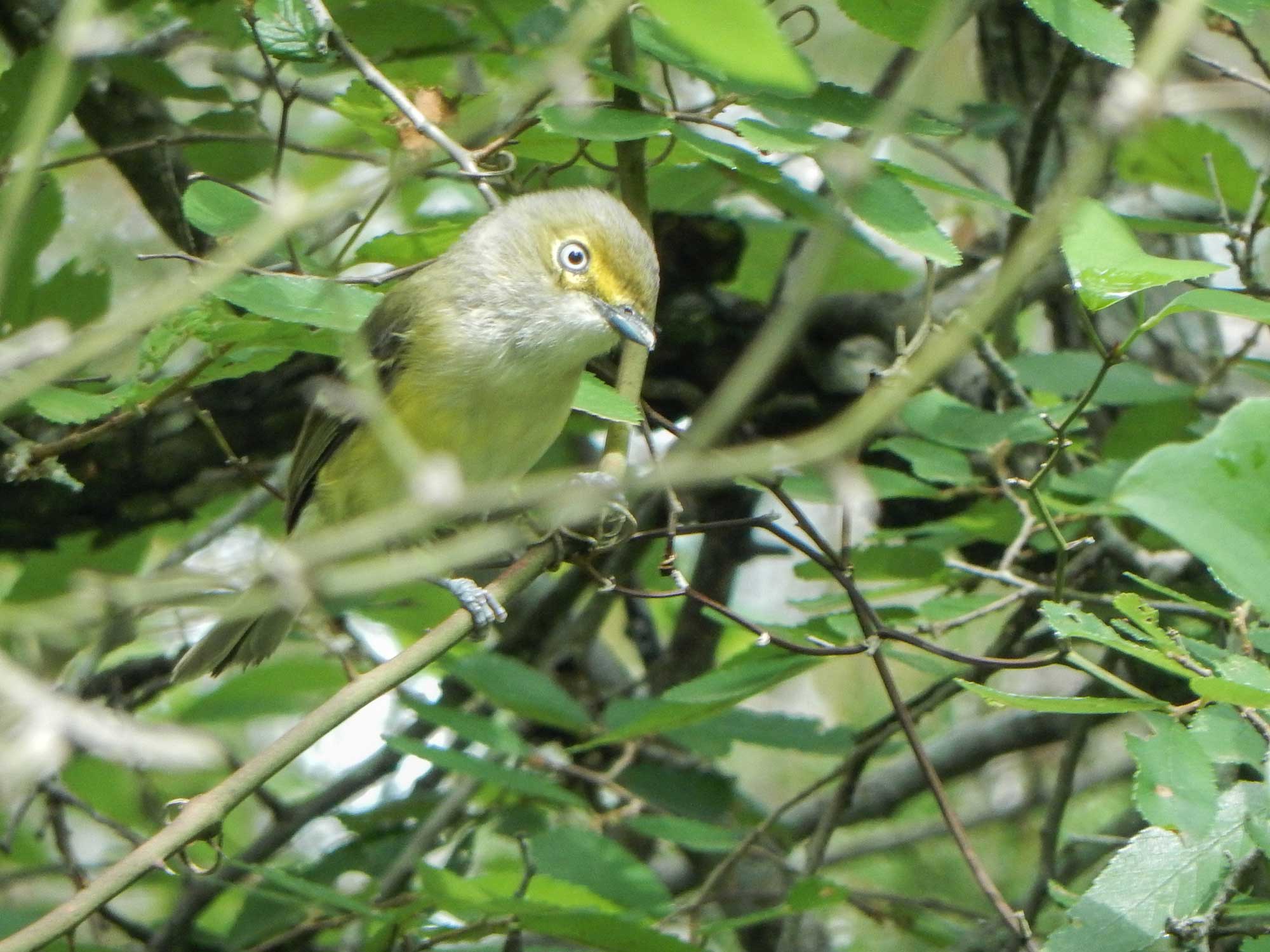
Also found in the Spring, the White-eyed Vireo is more often heard than seen. As it forages in brushy thickets, it has a loud song that may sound like “Quick! Pick up the beer check!” A thick bill with a sharp hook at the tip helps this insect-eater to grab caterpillars and tear apart beetles.
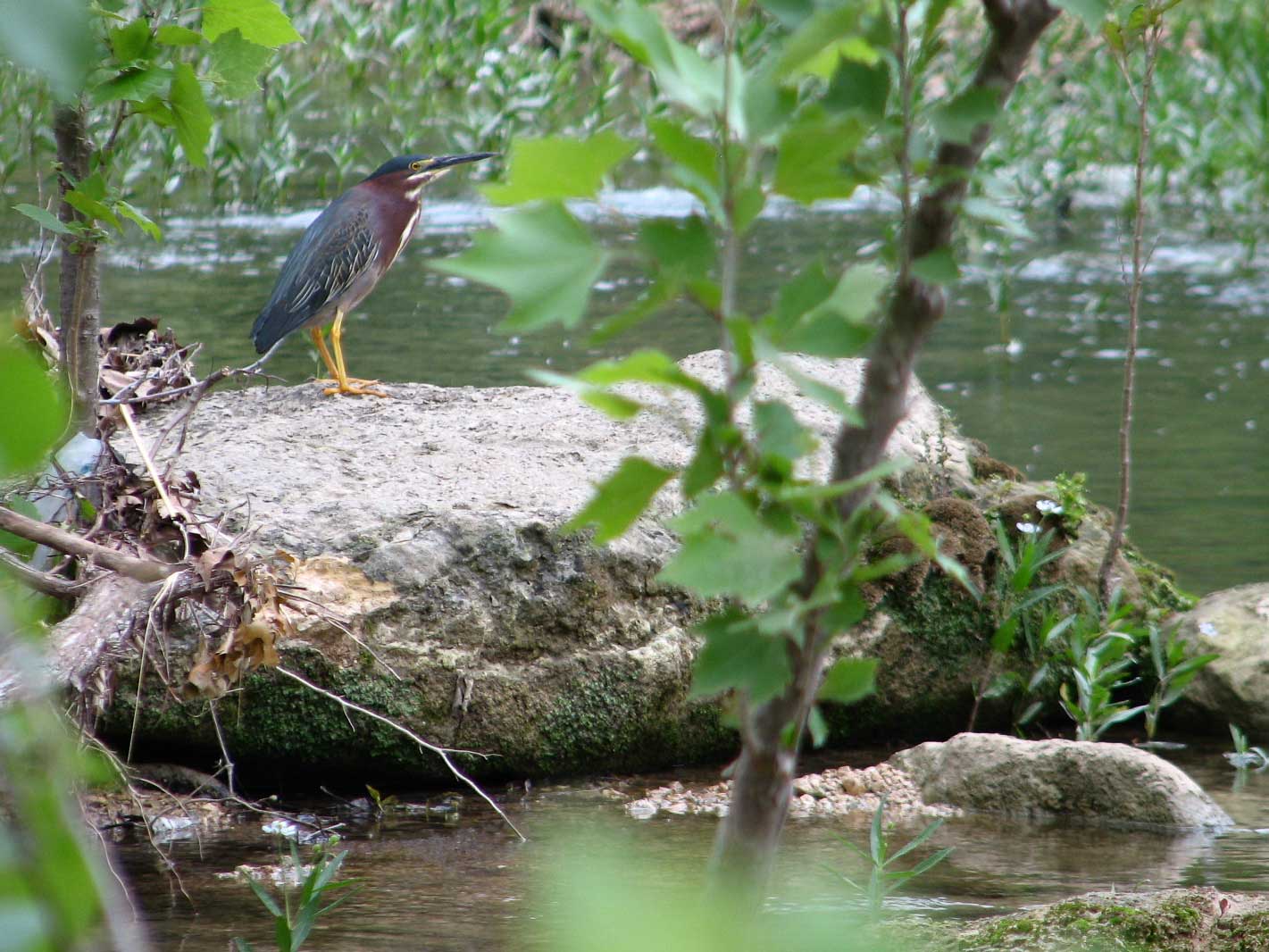
Found in the summer, the Green Heron is a stealthy stalker of frogs and small fish, this bird may even use bait: tossing a leaf, feather, or twig onto the water surface hoping to spear an inquisitive fish. The green of the head and back is hard to see except in bright light.
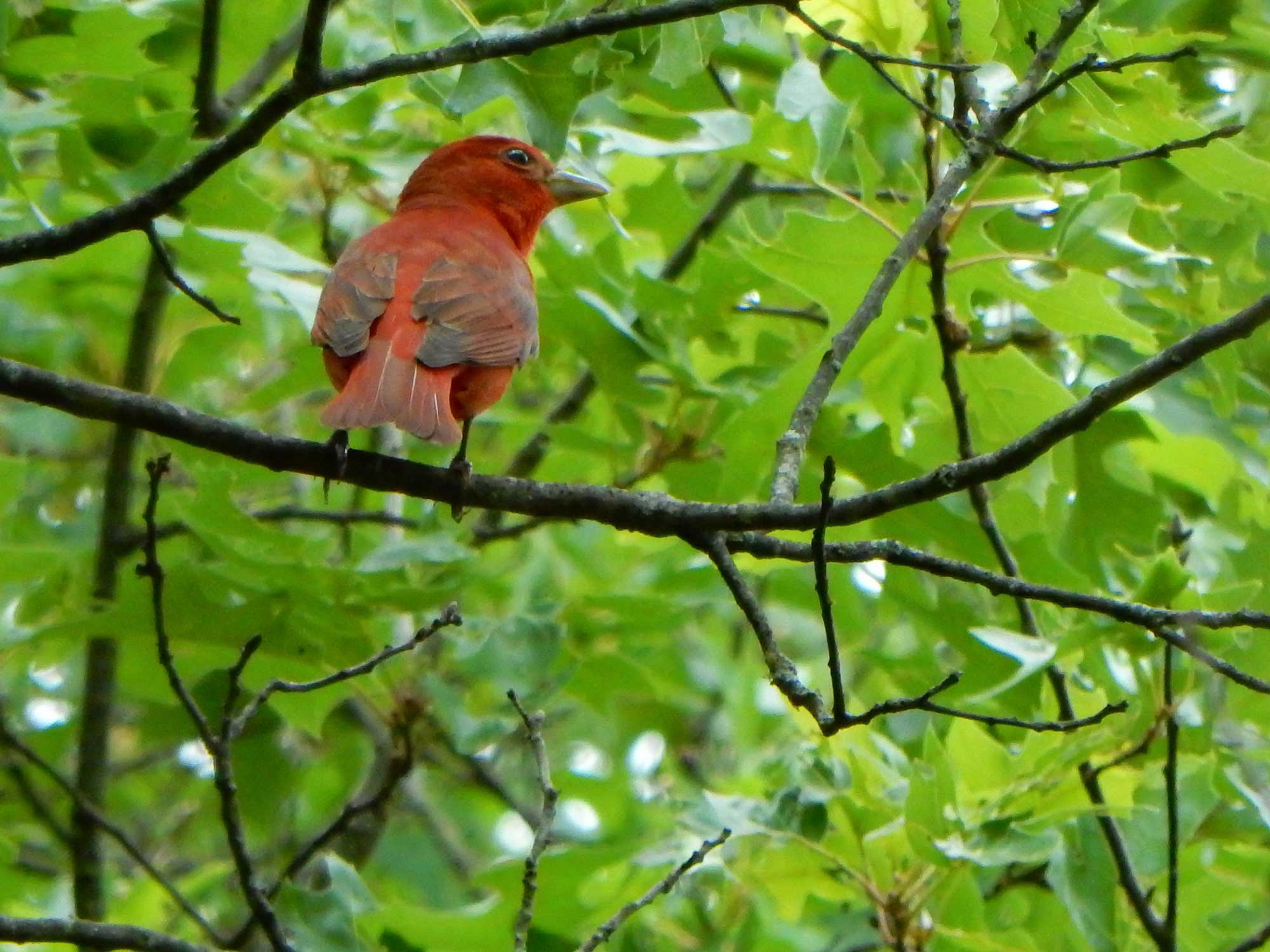
Also seen in Summer is the male Summer Tanager. It is even redder than a male cardinal. His mustard-yellow mate forages high in the trees for caterpillars, fruit, and – a favorite food – wasps! Their hiccupping calls sound like they are saying “tea-cup, tea-cup-up-up.”
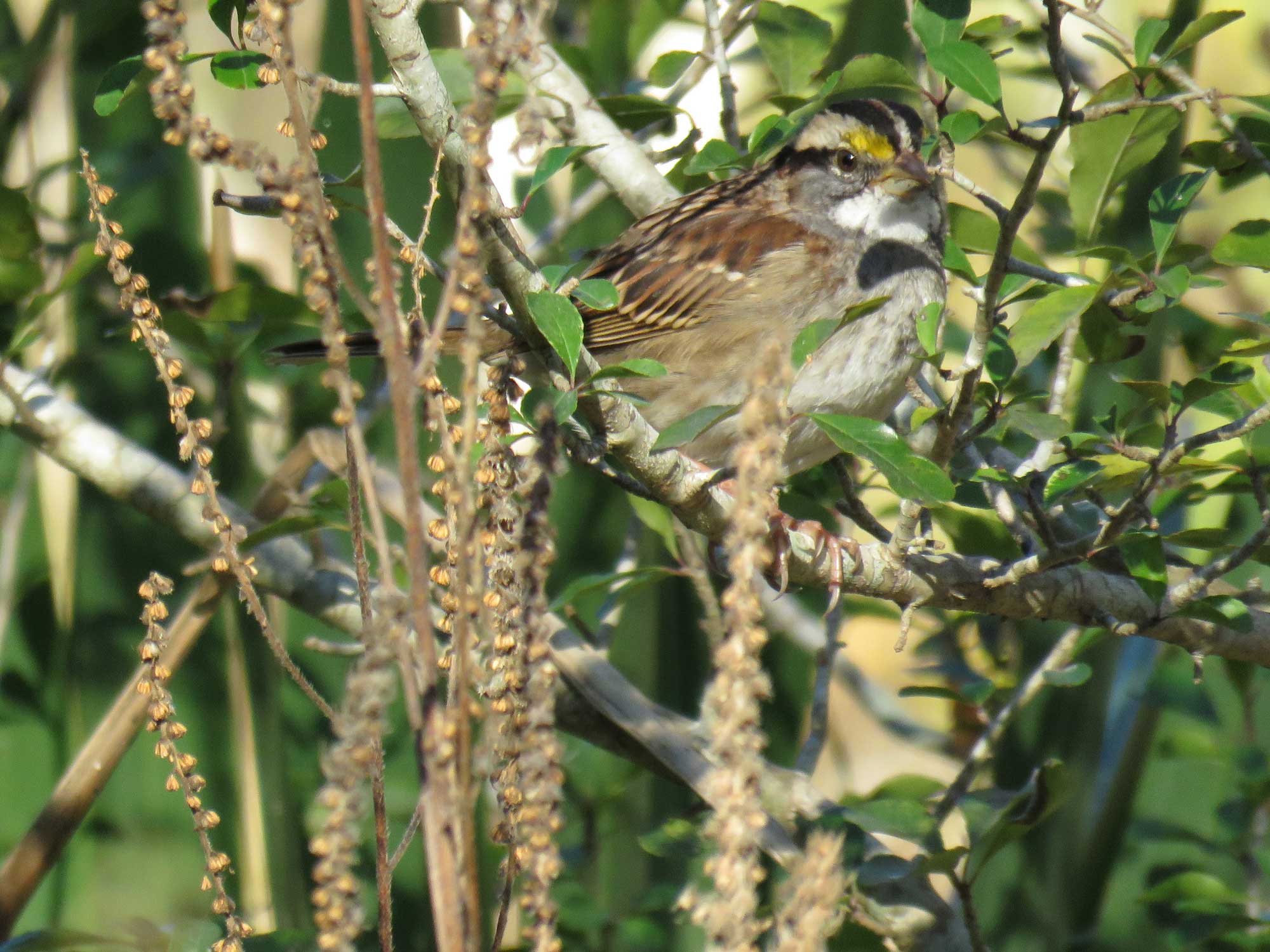
The White-throated Sparrow is one of the finest singers in North America, though in Fall and Winter you may only hear loud, metallic “Pink! Pink!” calls from a flock in a dense thicket. These birds scratch in the leaves for seeds that they can crack open with their thick bills. Since these sparrows can hide in dense thickets, the song is a good way to know they are there when you cannot see them.
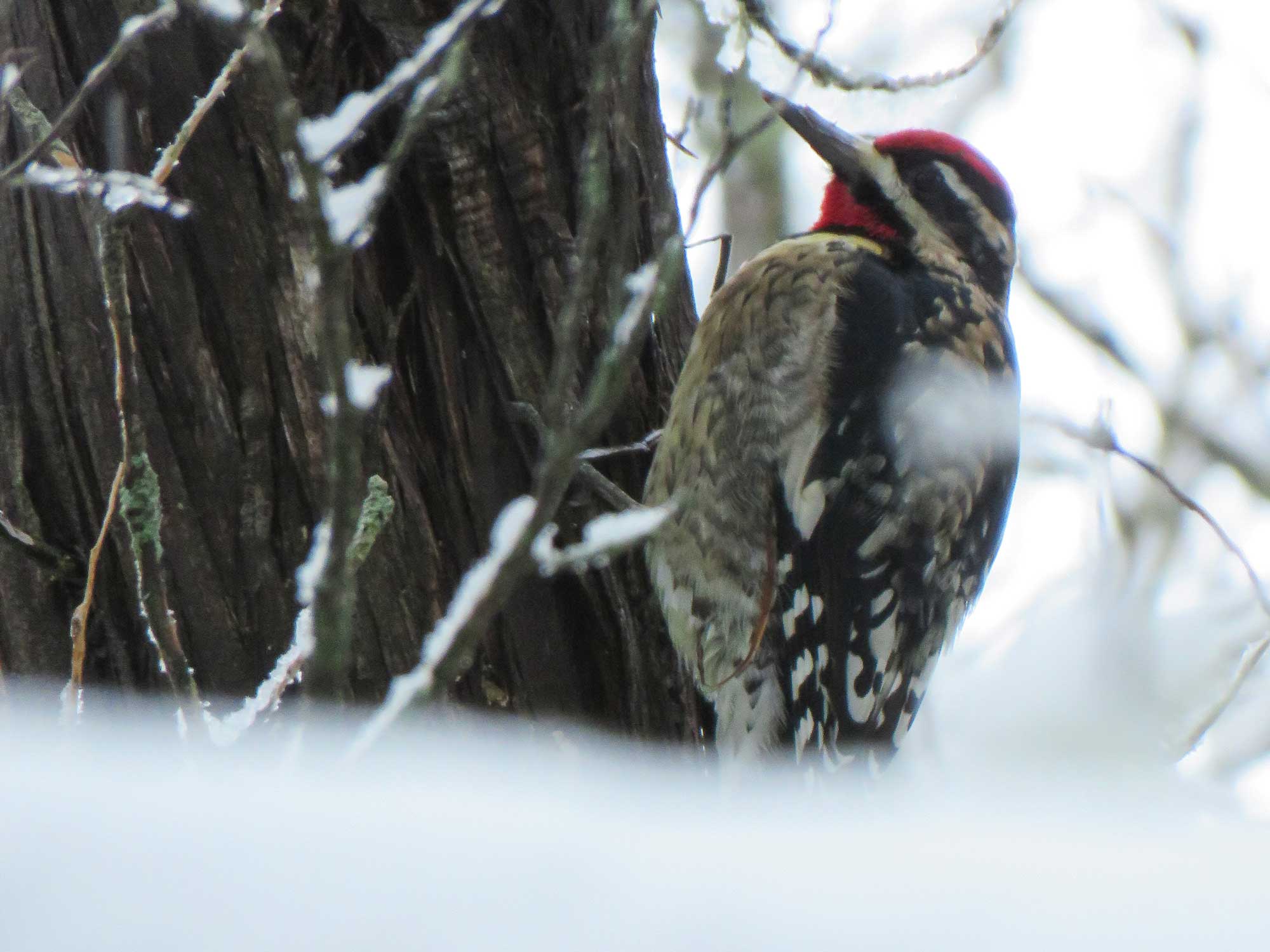
Yellow-bellied Sapsucker – Several neat rows of small holes pecked into the trunk of a tree are a sign that this woodpecker has been excavating for sap, a sweet treat that many other birds and insects may also lap up. The sexes can be distinguished by the color of the throat – red for males, white for females – but both sexes have red crowns… and yellow bellies. Season: autumn.
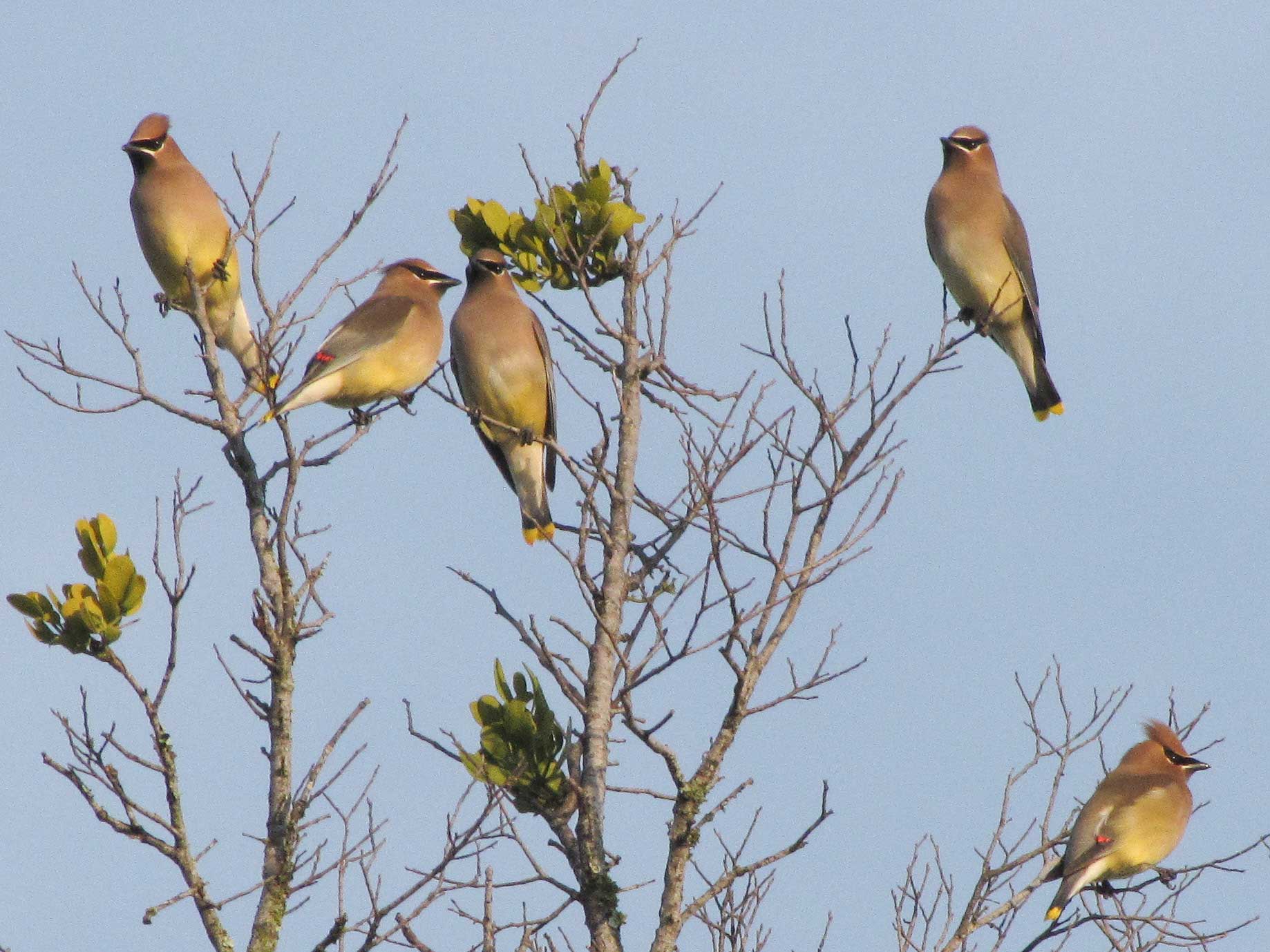
Cedar Waxwing – Named for their fondness for juniper or “cedar” fruits, these sleek birds will flock to many other kinds of fruit, too. The red markings on the wings of most waxwings – looking like the drippings from a red candle – come from carotenoid pigments in the berries the birds eat. Season: Winter

Spotted Towhee – This big, colorful sparrow was once called “Rufous-sided Towhee” until ornithologists determined it was distinct enough from the Eastern Towhee to be considered a separate species. The “tow-hee” call of the Eastern Towhee is slurred into “shreeee” by the Spotted Towhee. Season: Winter.

Bill Reiner is a biologist in the City of Austin’s Wildland Conservation Division. He monitors rare and endangered species and their habitat on the Balcones Canyonlands Preserve, including the Barton Creek Greenbelt and Wilderness.